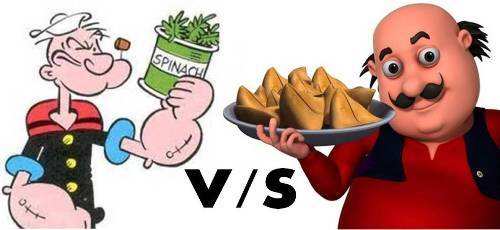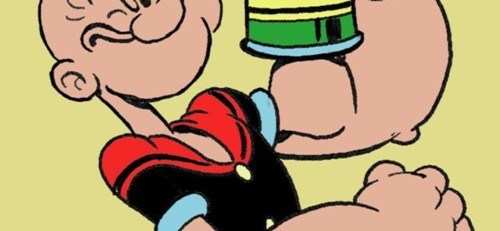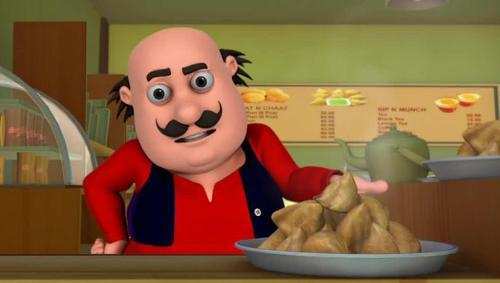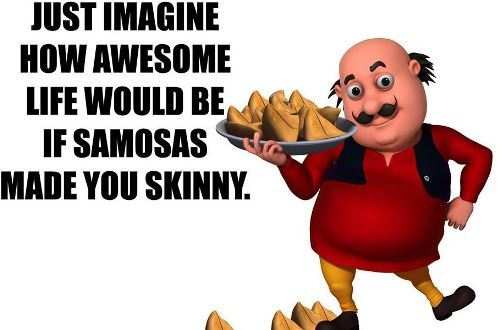Popeye’s Spinach and Motu’s Samosa | Super Food and Cartoon Characters
More than seventy years ago the cartoon character Popeye came to life. Cartoon creators were amazingly smart in making cartoon sailor man Popeye eat spinach (rich in iron). They were aware of spinach’s miraculous health properties and a general revulsion that children, and not to forget even adults, have for the distasteful spinach. Popeye would eat spinach as a super food and instantly grows enormous biceps and use his new-found strength to overcome his enemies. Fast-forward to India, post the turn of the century, a similar case of cartoon character and his super food is observed but with glaring differences

More than seventy years ago the cartoon character Popeye came to life. Cartoon creators were amazingly smart in making cartoon sailor man Popeye eat spinach (rich in iron). They were aware of spinach’s miraculous health properties and a general revulsion that children, and not to forget even adults, have for the distasteful spinach. Popeye would eat spinach as a super food and instantly grows enormous biceps and use his new-found strength to overcome his enemies. Fast-forward to India, post the turn of the century, a similar case of cartoon character and his super food is observed but with glaring differences.
Motu is a central character of the Indian animated sitcom television series Motu Patlu airing on Nickelodeon and his obsession with samosa replicates Popeye’s obsession with spinach, which he eats in vast quantities to boost his strength and wisdom. In a country where obese children are often euphemistically referred to as “healthy”, it is no surprise that Motu’s (a name cannot be more literal than that) obesity is wrongly equated with strength, superhuman prowess, intelligence and personality. Unlike Popeye who was indirectly promoted the eating of a vegetable which has less than 45 calories per cooked cup and which will only make you healthier, the choice of samosa as a super food is not only injudicious by the makers of the series but a chance that they missed upon in promoting healthy eating habits among Indian children.

Unlike Popeye whose strength was greatly enhanced by the consumption of a tin of spinach, in Motu’s case it is his strength as well as his intelligence that is improved. He frequently says, “Khali pet mere dimaag ki batti nahi jalti,” roughly translated as, “I find it difficult to think on an empty stomach.” Food here is equivalent to samosas. Food has nothing to do with strength here rather its Motu’s brain that is activated. Motu Patlu is an adaptation from the classic comic strip on Lot Pot. Ever since it premiered on 16 October 2012 it continues to remain a popular show with Indian children.
The story primarily revolves around two diametrically opposite friends, Motu and Patlu, and their adventures in the fictional city Furfuri Nagar. The theme song “Motu Aur Patlu Ki Jodi” sung by Sukhwinder Singh and penned by none other than the versatile lyricist Gulzar is very popular. It is one of the most popular children’s shows in India. The show focuses on how they have a penchant to land in hilarious situations and later rescue themselves merely by sheer luck. Samosa is the favourite food of Motu. When Motu eats samosas, he receives more energy and derives more strength than his normal state. For Popeye, spinach is an elixir of youth, but samosas have no such effects on the middle aged balding Motu.

The quantity of the super food consumed is also a major point of concern. Whereas Popeye would guzzle down a tin of spinach at a time, Motu is seen to consume innumerable numbers of samosas, which defies rationality and is also senseless. While Popeye’s spinach is always somewhere in his pocket and magically conjures up when required, Motu’s samosas are hard to get. In some episodes he has to make a lot of effort to secure some samosas. He has to earn them sometimes.
What benefit will the creators of Motu Patlu achieve by unmindfully promoting something as ubiquitous as samosa in the Indian context? They can’t feign ignorance of the effect that their programs have on young minds. Today’s advertisements encourage unhealthy fast foods, sweetened cereals and other processed foods filled with dangerous “trans” fats. These foods are filled with excessive calories with no nutritional benefit. This is promoting obesity in our children, which has become epidemic among all Americans and particularly in our youth. Already the advertisements are full of candies, lollipops, chips, sweetened milk, etc. the makers had a huge chance of inculcating good eating habits in Indian children by showing them the benefits of ghee, doodh , lassi, makhan or roti. It’s a chance missed. My two year old son associates samosa with some kind of super food. Unfortunately I find it hugely difficult to correct him.

One can well imagine parents trying to convince their children to eat the green leafy vegetable by telling them all about Popeye, but would they cite Motu and his samosas as an example? No parent wants their child to look like Motu. This also brings to mind Popeye’s girlfriend Olive Oyl. One can only wonder if the name came from the healthy “olive oil”. Not only was Popeye eating healthily, his girlfriend was health incarnate.
In conclusion we can say that Motu’s obsession with samosas is far from an ideal model for the Indian children. The makers of the series missed a golden opportunity in introducing desi food habits and items as super foods. No amount of junk food can boost the strength and intelligence as a tin of spinach can. Even the comparison is pointless. After all, you are what you eat. Popeye’s testimony that he is “strong to the finish, cause I eats my spinach” rings so true even after so many decades.
Reader Contribution:
Dr. Sapna Dogra completed her B.A and M.A. in English Literature from University of Delhi. She holds a PhD from Jawaharlal Nehru University. Her research interests include Folklore Studies, Translation Studies, Indian English Writing, Hindi Literature and Popular Literature. She can be reached at sapnardm@gmail.com
To join us on Facebook Click Here and Subscribe to UdaipurTimes Broadcast channels on GoogleNews | Telegram | Signal


